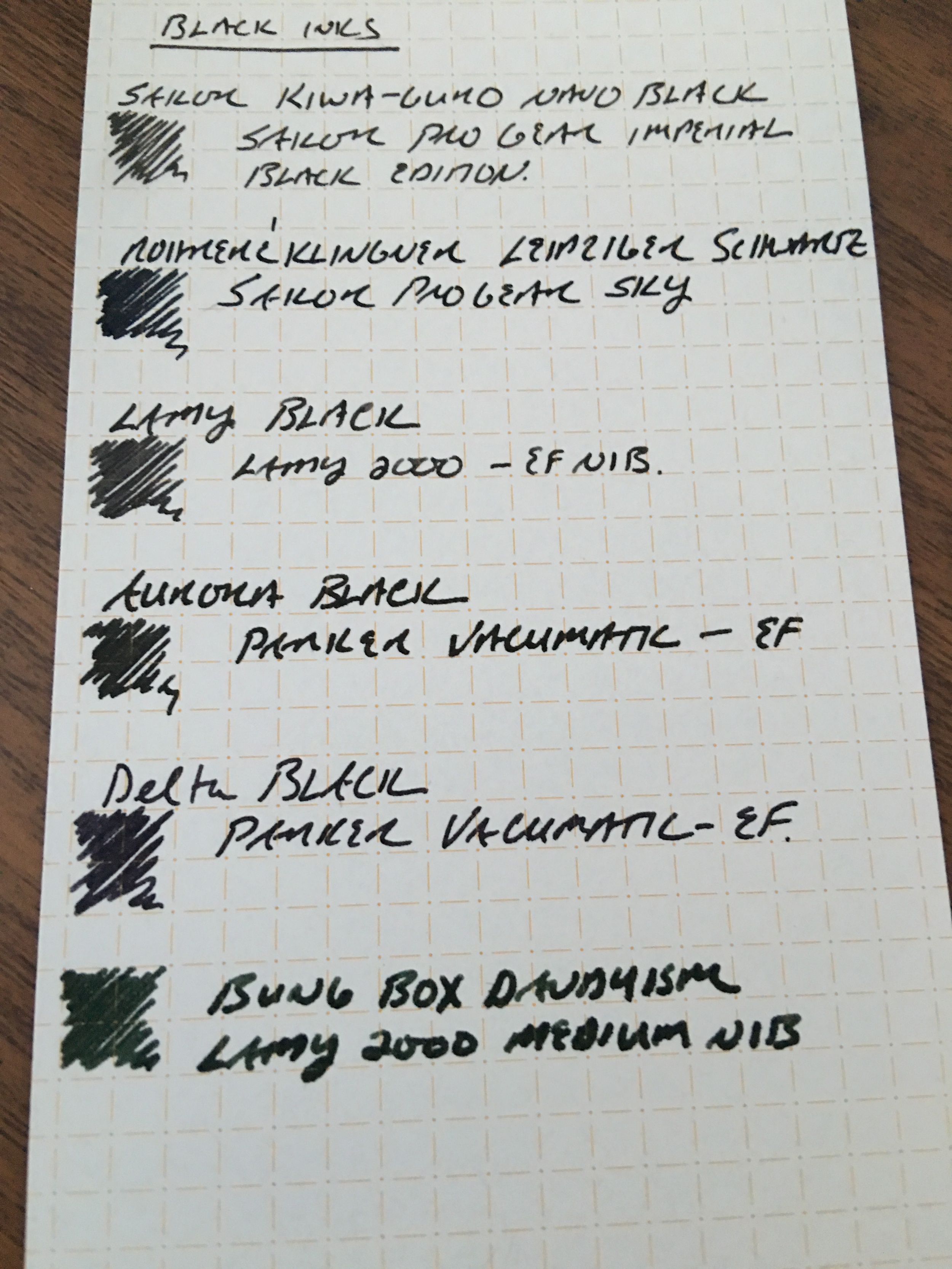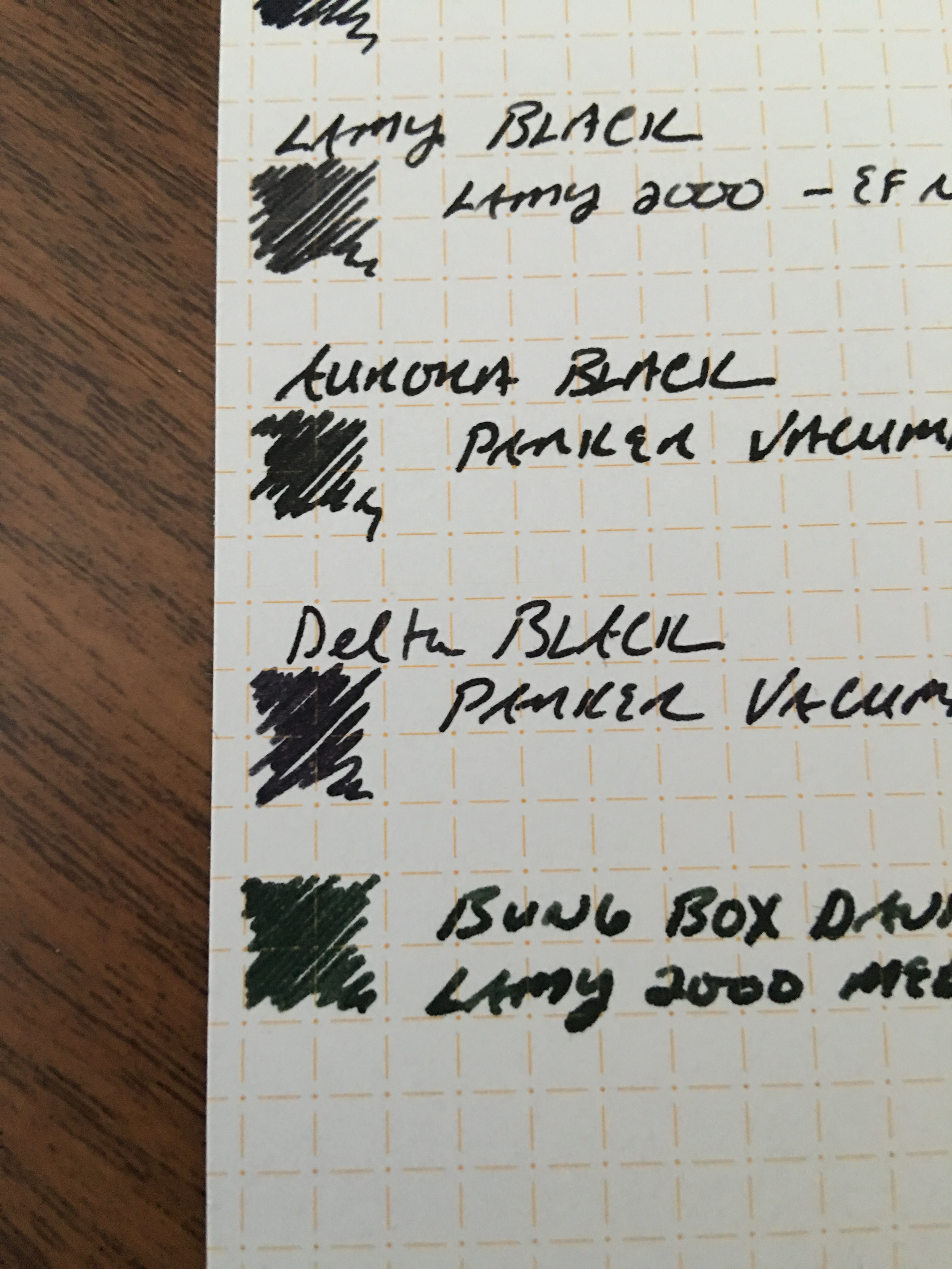This year I made the decision to move most of my ink reviews over to my Tumblr blog, www.bottledup.ink, and to start writing ink reviews in a much more abbreviated format. I did this for a couple reasons. First, there are a number of people out there who do far more comprehensive ink reviews than I was ever able to put together, so in terms of this blog, it seemed like a better use of my time to produce other kinds of content. Second, I honestly was getting a bit bored with the lineup of available fountain pen inks and wasn't having as much fun writing the reviews. Sure, there were still some unique colors out there, but it was getting increasingly expensive to chase "uniqueness" in the form of limited editions that were starting to run upwards of $35 per bottle.
Enter KWZ. KWZ is manufactured in Warsaw, Poland by Konrad Zurawski, a PhD student in Chemistry. KWZ inks originally attracted attention for their lineup of modern iron gall inks in a wide range of unique colors, such as Mandarin Orange and Turquoise. I'm not aware of another company that offers ink like this: previously, with iron galls you were limited to blue blacks and the occasional "dusty pink/purple", such as Rohrer and Klingner Scabiosa. While I don't personally own any of the KWZ iron gall inks, I've tested them out at pen shows, and it seems as though KWZ has managed to create an iron gall ink that flows well. (The one knock on iron gall is that traditionally, it can write very dry.)
NOTE: If you are unfamiliar with Iron Gall ink and its properties, please read the ENTIRE disclaimer on the Vanness website. TLDR version: iron gall ink, while famous for its ability to change color as it dries, can be corrosive, and while the iron gall content in KWZ ink is probably not high enough to damage modern gold or stainless steel fountain pen nibs and parts, it's not a good idea to leave these inks in a pen for weeks at a time, or to mix these inks with non-iron gall inks. I'm not trying to be alarmist - I use a couple iron gall inks on a regular basis, including Platinum blue black and the old school Pelikan blue black - you just have to practice good fountain pen hygiene.
KWZ Green Gold, in a Lamy 2000 Stainless Steel medium cursive italic ground by Mark Bacas.
Personally, I'm enamored with KWZ's standard line of inks (i.e., the non-iron gall variety). I purchased my first bottle (Green Gold) at the 2016 Atlanta Pen Show, and soon after placed an order for two other inks that caught my eye: Brown-Pink (yes, that's a real color) and Honey (it looks exactly as you'd expect Honey-colored ink to look).
A macro shot of KWZ Brown Pink on Leuchtturm dot grid paper.
Behavior-wise, these inks tick all the boxes I look for: they flow well, they don't feather or bleed on relatively cheap paper, and they dry quickly with no smearing. Seriously, all three of these KWZ inks have near-instantaneous dry times, which I love when I'm taking quick notes at work and have to be able to flip the pages without worrying whether or not I'll end up with a smeary, unreadable mess at the end of the day.
A macro shot of KWZ Honey on Leuchtturm dot grid paper.
But as it always is with inks, it really comes down to the color. For work, I prefer muted, offbeat colors that don't scream off the page. The Brown Pink could best be characterized as a burgundy with purple tones. It's a nice color that I've used regularly. Honey resembles J. Herbin's Lie de The, only it's a slightly warmer color with less green. The Green Gold is how I expect my "moss green" or "racing green" ink to look. It's not watery like some other inks I've tried in this color (Stipula Verde Muschiato and Papier Plume Moss Green come to mind). Though I'm someone who rotates inks a lot in his pens, these three have seen a lot of repeat use lately.
Where to Buy
Vanness Pens is the only U.S.-based retailer I'm aware of that stocks KWZ inks, and they always maintain a wide selection in stock, though Honey and Brown Pink tend to sell out quickly. KWZ ink is also reasonably priced, at $12 for 60ml.
Further Reading
Check out these links for some additional reviews of KWZ Inks.
Brad Dowdy of the Pen Addict reviews Iron Gall Gummiberry.
Jeff Abbot, writing for the Pen Addict, reviews Iron Gall Gold.
Azizah over at Gourmet Pens reviews KWZ Honey.
The Pen Habit reviews Iron Gall Turquoise.
DISCLAIMER: I purchased the inks featured in this review with my own funds for my own collection. While Vanness Pens is a sponsor of this site, I was not compensated in any way for this review.



